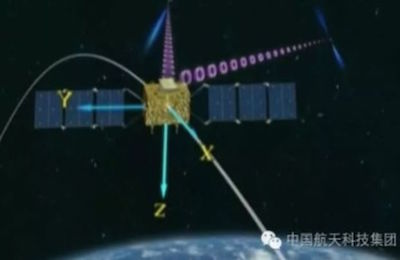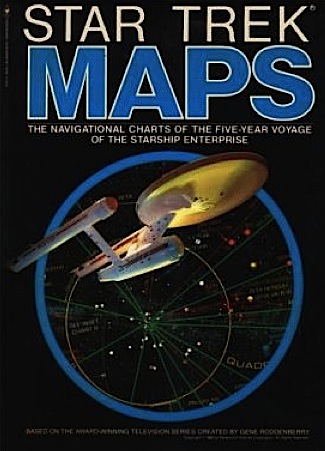Science Fiction
Dictionary
A B C D E F G H I J K L M N O P Q R S T U V W X Y Z
China's XPNAV 1 To Use X-Ray Pulsars For Navigation

China just launched XPNAV 1, the world's first x-ray navigation system. The X-ray Pulsar Navigation satellite, which the country launched on Nov. 10 aboard a solid-fueled Long March 11 rocket from the Jiuquan Space Launch Center in the Gobi Desert,

(XPNAV-1 X-ray Pulsar Navigation satellite)
The navigation system relies on x-ray pulsars found in systems with two stars. Essentially a dense neutron star's strong magnetic field pulls in gas from the other star, and when the gas impacts the neutron star, it generates a strong X-ray hotspot. If the neutron star's spin axis and magnetic axis are not aligned, as the neutron star rotates, pulses will be generated as the X-ray hotspots move in and out of the observer's view. This turns out to be a useful tool for navigation.Millisecond pulsars generate x-ray pulses at such short intervals, that by measuring the time differential from multiple known pulsars (like a GPS using pulsars instead of satellites), a spacecraft can determine its location in the solar system within 5 kilometers (3.1 miles), which is pretty good for deep space. The trick is to find pulsars that provide pulses at a consistent pace; x-ray pulsars often speed up or slow down the frequency of their bursts.
If all goes as planned, the XPNAV 1 will both gather data to build the pulsar x-ray database and then be able to use that data to independently verify its location.
Science fiction writers of the 1950's were fascinated by this idea. In his 1952 story Troubled Star, George O. Smith described space beacons:
"And what is a beacon?""It is a phenomenon caused by the Doppler effect when traveling at galactic speeds. In this case, when coming through this rift at fifteen hundred light years per hour, a three-day variable star will appear to the observer as a rapidly blinking light..."
"We use the three-day variable to denote the galactic travel lanes. Very effective.
(Read more about Smith's space beacon)
In his 1956 story The Repairman, Harry Harrison described a hyperspace beacon:
Every beacon has a code signal as part of its radiation and represents a measurable point in hyperspace. Triangulation and quadrature works for navigation - only it follows its own rules.For a hyperspace jump, you need at least four beacons for an accurate fix.
(Read more about Harrison's hyperspace beacon)
In 1980, Star Trek Maps was published; it consisted of a set of four maps and an Introduction to Navigation booklet. In the accompanying pamphlet, they described the standard navigation system using "sub-space beacons", and then described the emergency system that used pulsars as a GPS system. It included the real equations as well.

(Star Trek Maps: galactic coordinates and basic vector calculus)
XPNAV 1 is the world's first x-ray navigation system to go in orbit. NASA's Station Explorer for X-ray Timing and Navigation Technology (SEXTANT), will not be installed on the ISS until 2017.
Via PopSci.
Scroll down for more stories in the same category. (Story submitted 11/15/2016)
Follow this kind of news @Technovelgy.| Email | RSS | Blog It | Stumble | del.icio.us | Digg | Reddit |
Would
you like to contribute a story tip?
It's easy:
Get the URL of the story, and the related sf author, and add
it here.
Comment/Join discussion ( 0 )
Related News Stories - (" Space Tech ")
Reflect Orbital Offers 'Sunlight on Demand' And Light Pollution
'I don't have to tell you about the seven two-mile-diameter orbital mirrors...'
Chrysalis Generation Ship to Alpha Centauri
'This was their world, their planet —
this swift-traveling, yet seemingly moveless vessel.' - Nat Schachner, 1934
The First Space Warship For Space Force
'Each of the electrical ships carried about twenty men...' - Garrett P. Serviss, 1898.
Is China Mining Helium-3 On The Moon's Farside?
'...for months Grantline bores had dug into the cliff.' -
Technovelgy (that's tech-novel-gee!) is devoted to the creative science inventions and ideas of sf authors. Look for the Invention Category that interests you, the Glossary, the Invention Timeline, or see what's New.
Science Fiction
Timeline
1600-1899
1900-1939
1940's 1950's
1960's 1970's
1980's 1990's
2000's 2010's
Current News
Musk Idea Of Cars Talking To Each Other Predicted 70 Years Ago
'My cars talk to one another.'
Elegant Bivouac Shelter Produces Water And Electricity
'There was nowhere on the planet where science and technology could not provide one with a comfortable home...'
X-Control Janus-1 A Suitcase Aircraft
'You will notice that it... fits the suitcase nicely.'
'AI Assistants' Are Actually Less Reliable For News
'Most men updated their PIP on New Year's Day...'
YES!! Remote Teleoperated Robots predicted by Technovelgy!
'...a misshapen, many-tentacled thing about twice the size of a man.'
Will Robots Ever Fold Landry?
Where have you gone, Mrs. Robinson?
Will AIs Give Better Results If You're Rude To Them?
'I said, "Listen up, motherf*cker.'
Cybertruck Robotic Arm F10 Drone Launch!
Drone away!
Black Fungus Blocks Radiation
'You were surrounded by Astrophage most of the time'
Liuzhi Process Now In Use In China
'He was in a high-ceilinged windowless cell with walls of glittering white porcelain.'
Reflect Orbital Offers 'Sunlight on Demand' And Light Pollution
'I don't have to tell you about the seven two-mile-diameter orbital mirrors...'
Will Robots Become Family Caregivers?
'The robant and the tiny old woman entered the control room slowly...'
Chinese Tokamak Uses AI To Keep Fusion Plasma Stable
'Guy named Otto Octavius winds up with eight limbs... What are the odds?'
Time Crystals Can Now Be Seen Directly
'It is as you thought when you constructed the time crystal, my master Vaylan.'
RoboBallet The Dance Of Cooperative Robots
'...an integrated seven-unit robot team.'
Chrysalis Generation Ship to Alpha Centauri
'This was their world, their planet —
this swift-traveling, yet seemingly moveless vessel.'
